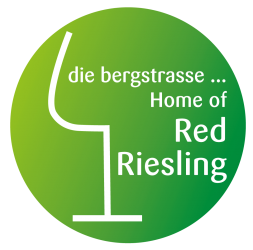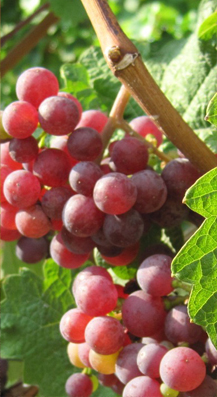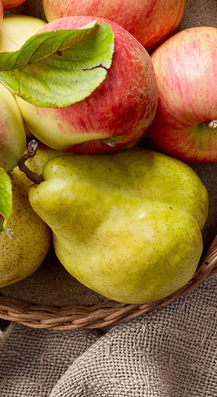Red grapes – white juice
Red Riesling is a very exciting rediscovery in the world of winemaking that only dates back some 20 years. Many connoisseurs of wine were unaware that the “king of white wine”, Riesling, had a “redskin brother”. Some experts are even convinced that red Riesling with its reddish skin is the original Riesling variety. However that may be, it has come to the forefront of wine connoisseurs’ attention again since the early 2000s. It is a specialty and a particular favourite of the Hessische Bergstrasse.
Red Riesling, which is used to make white wine, is a consummate blend of history, culture, geology and joie de vivre. Because of the red pigments they contain, the grapes can withstand the heat better and are more robust than the modern white variety. That may become increasingly important as climate change progresses. The Bergstrasse with its many hours of sunshine and the same average annual temperatures as on the lakes of Northern Italy is keen to conserve its old grape varieties.
The 15-hectare Hessische Bergstrasse is the largest continuous winegrowing area for red Riesling in the whole of Germany. Many vintners cultivate this “newcomer” here. The rediscovered variety is setting off from here to conquer the world and is well on the way to acquiring cult status. Red Riesling tends to be less acidic than white Riesling, and has a predominance of apple and pear aromas.



